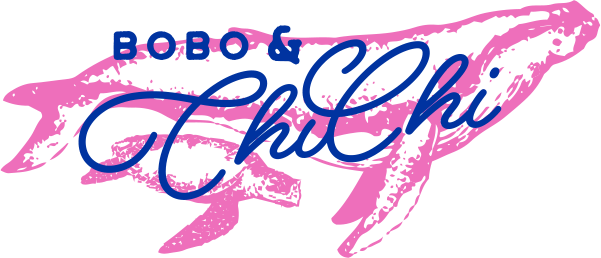Washington DC Travel Guide
Our Nation’s Capital…
Washington D.C. is a surprisingly cool destination to visit. While the compact city serves as the U.S. capital and many of the sites here are government buildings, there’s so much more to the destination from its world-renowned museums and really cool neighborhoods.
Exploring the neighborhoods of D.C. ended up being what we loved the most, both of us were excited to go back to Washington D.C. as adults together because we really hadn’t been since our childhood field trips with our schools.
That experience was memorable, but its completely different as an adult and we had so much more appreciation not only for the historic sites, but the destination as a whole.
We really love the city.
If it’s you’re first time, you’ll want to begin your journey at the National Mall, it’s here you’ll find landmarks like the Lincoln Memorial, Washington Monument, the FDR Memorial, Martin Luther King Jr. Memorial, and various war memorials.
Washington D.C. has so many museums you won’t be able to do them all in one trip (nor should you try). There are multiple Smithsonian Institutions, incredible art museums like the National Gallery of Art for example, and even more quirky museums like the International Spy Museum, which is super fun as its an interactive and educational museum.
Better yet, many of the museums are free to visit too.
You can plan ahead to visit our working judicial and legislative government institutions like the U.S. Capitol, Library of Congress, and Supreme Court. If you reach your member of Congress, you can arrange for a tour of the White House too.
Neighborhoods like Georgetown, Dupont Circle, U Street Corridor, Adams Morgan, and H Street Corridor are lovely to visit and wander through.
There’s just so much to see and do here in such a compact area, it’s truly a place you could do multiple weekend getaways to and not get bored.
Quick Tips for Visiting Washington D.C.
When is the best time to visit Washington D.C.?
The best time to visit Washington, D.C. is during the spring (March to May) and fall (September to November).
Spring in D.C. is particularly enchanting, with the famous cherry blossoms in full bloom, especially around the Tidal Basin and National Mall.
The mild temperatures make it a really comfortable time for walking around the city between tourist sites.
Fall offers crisp, cool weather and colorful foliage, providing a scenic backdrop. Early fall is still warm and comfortable.
Summer (June to August) brings warm to hot weather and is often more crowded as this is a popular time to visit.
Winter (December to February) sees cooler temperatures and occasional snowfall.

How Much Time Do I need in Washington D.C.?
How much time you need to visit Washington, D.C. depends on how much you want to see. For a brief overview, plan 2-3 days to see major landmarks, a few museums, and check out a few neighborhoods.
If you’re a traveler who won’t get museumed-out, you can easily plan a few extra days just for museums alone.
A 5-7 day stay allows more time to see more neighborhoods, visit places like the Arlington National Cemetery, and also have an opportunity to visit places connected to but just outside of D.C.’s city limits, like Mount Vernon, George Washington’s estate located just 15 miles outside of the city.
In our opinion, D.C. is best visited on multiple trips if you have that ability. We really only have the attention span to enjoy a few museums fully per trip, plus sprinkling in a few neighborhoods for self-exploration, and hitting up a few of the iconic landmarks.
What is Washington D.C. most famous for?
Washington, D.C. is most famous for its historic and cultural landmarks.
As the capital of the United States, you’ll find monuments like the Washington Monument, Lincoln Memorial, and the Capitol Building to name a few.
The National Mall serves as a centerpiece, home to the renowned Smithsonian museums.
Beyond these, the White House stands as a symbol of the American presidency and power.
Georgetown’s charming cobblestone streets offer a glimpse into the city’s colonial past, while neighborhoods like Dupont Circle and Adams Morgan buzz with vibrant nightlife and colorful homes.
In the spring, the Tidal Basin is one of the most famous places to see cherry blossoms in the world.


What’s the best way to get around Washington D.C.?
The best way to get around Washington, D.C., is using public transportation. You’re in a smaller, compact destination so having a car can be burdensome as you have to find parking and can get stuck in traffic.
The most efficient way to get around areas outside of walking distance attractions is using the Metrorail and Metrobus systems. The city’s Metrorail is convenient for reaching destinations like the National Mall, museums, and monuments.
There are also bike sharing options around the city and plenty of walkable attractions.
For visiting nearby areas, you can use the MARC and VRE commuter trains.
There are a few places that are easier to access by car including Mount Vernon and the United States National Arboretum.
Must Try Food in Washington D.C.
There are a few must try foods in Washington D.C. like the half-smoke, a sausage that’s a spicy cross between a hot dog and a smoked sausage, best enjoyed at Ben’s Chili Bowl, a famous spot since 1958 that the likes of Anthony Bourdain, Barack Obama, and even Martin Luther King Jr. ate at in U Street Corridor.
Another must try is the mumbo sauce. It’s a tangy and sweet sauce often served with fried chick and fries.
And if you see cherry pie on the dessert menu, this is another famous food of D.C. and you can bite in knowing George Washington would approve.





